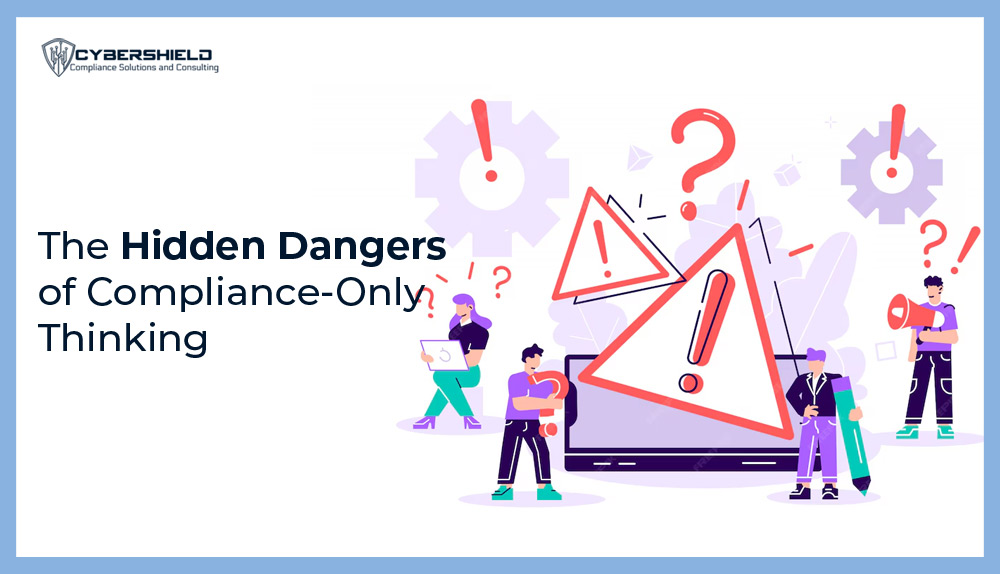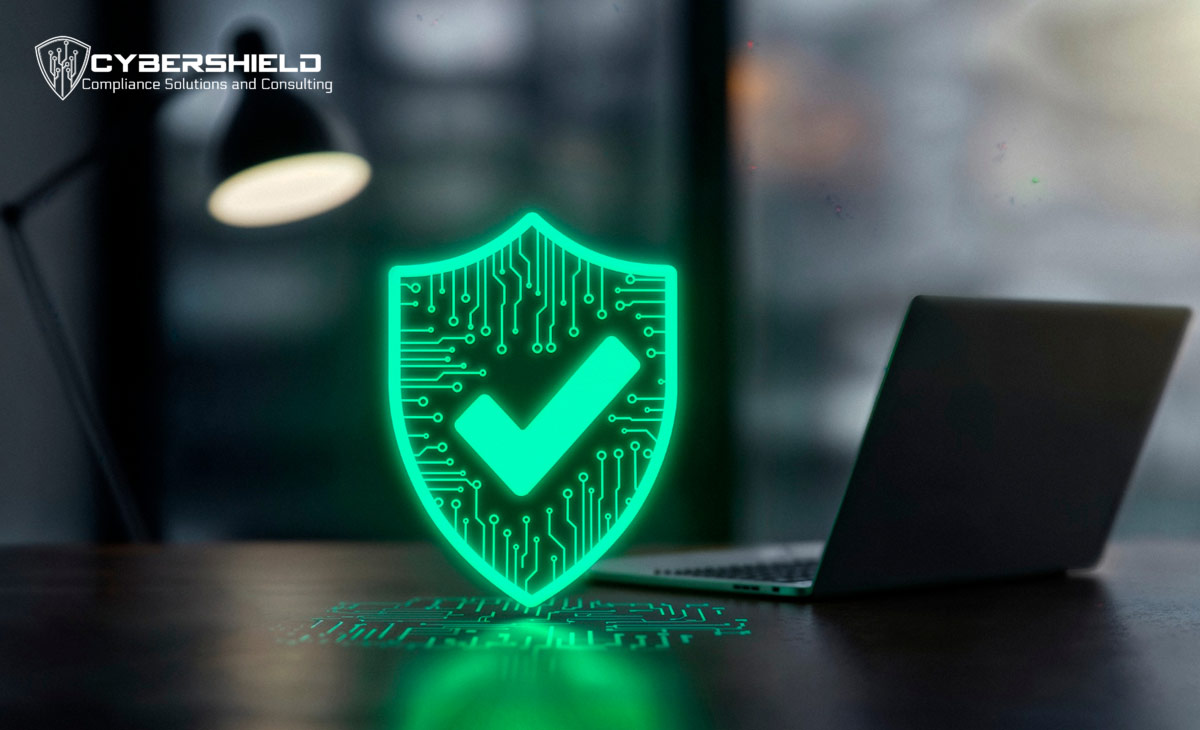Does a Compliance Certificate Guarantee SaaS Security? The Facts vs. the Myths
In today’s SaaS-dominated landscape, where cloud-native platforms manage everything from enterprise data to personal health records, the word “compliance” has become synonymous with trust.
From SOC 2 and ISO 27001 to HIPAA and PCI-DSS, SaaS security certifications are now seen as golden standards for proving a platform’s security capabilities. But does a certificate mean a SaaS product is secure?
The truth is that compliance and security are not the same thing, and mistaking one for the other can lead to serious oversights.
Does a Compliance Certificate Guarantee Full SaaS Security?
A compliance certificate is intended, in principle, to reassure stakeholders that a SaaS provider has complied with accepted standards for data processing, risk management, and governance. Because they offer uniformity and accountability, frameworks such as SOC 2, ISO 27001, HIPAA, and PCI-DSS are beneficial. When customers see the certificate, they believe it to be a sign of trust.
The truth is that a compliance certificate just attests to the organization’s adherence to the necessary rules and controls at the time of the audit. What occurs the next day, week, or month when fresh vulnerabilities, zero-day exploits, or insider threats surface is not taken into consideration.
Think of compliance as getting a “fitness certificate” during a health check. Passing the test means you’re in good condition today, but it doesn’t mean you’ll stay fit unless you exercise, eat well, and continuously monitor your health. The same principle applies here: a SaaS security certification provides reassurance, but only continuous effort delivers real protection.
Understanding SaaS Security Beyond Compliance Certificates
In order to achieve true SaaS security, one must look beyond the compliance checkbox method. Building a comprehensive defensive system that changes with your platform, users, and threat landscape is what it entails. This means acknowledging that compliance is a piece of the puzzle, not the whole picture.
Modern SaaS security extends into multiple layers, such as:
- Proactive Threat Management: Detecting suspicious activity in real time, rather than waiting for an audit report.
- Adaptive Security Posture: Updating controls, patching systems, and adjusting policies in response to new risks.
- Shared Responsibility Awareness: Understanding that cloud providers secure the infrastructure, but your organization must secure applications, data, and user access.
- Cultural Integration: Embedding security into every business process, from product design to customer support.
Compliance vs. Security: Why the Distinction Matters
Before dissecting the myths, it’s crucial to understand the foundational difference between being compliant and being secure.
Cyber compliance refers to the act of meeting a specific set of standards or regulations, typically defined by an external governing body. It’s typically demonstrated through periodic audits, documentation, and policy enforcement. The focus is often on maintaining well-documented processes, role-based access, and risk management frameworks.
Security, however, is about protecting your systems in real time. It’s a living, breathing effort that involves detecting and mitigating active threats, adapting to new vulnerabilities, and continuously strengthening your defenses.
A compliant system may be well-governed on paper, but that doesn’t mean it’s resilient in practice.
Myth #1: A Compliance Certificate Means We’re Fully Protected
Many SaaS providers breathe a sigh of relief once they achieve their SaaS security certification, assuming that it marks the end of their cybersecurity journey. Unfortunately, this is one of the most pervasive and harmful misconceptions in the industry.
Fact: Compliance is a Starting Point, Not a Safety Net
Compliance frameworks are designed to establish minimum security baselines. They help companies formalize policies and align with best practices, but they rarely guarantee coverage for evolving, real-world cyber threats.
For instance, a company may be SOC 2 compliant but still lack a meaningful incident response plan or fail to detect lateral movement in its cloud infrastructure.
Moreover, most Cyber Compliance and Breaches audits are conducted annually or semi-annually, providing only a snapshot-in-time assessment. Meanwhile, cybercriminals operate in real time, exploiting new vulnerabilities as they emerge—often within hours.
Compliance focuses on governance and control, while real security demands continuous vigilance and threat preparedness.
Myth #2: All Compliance Frameworks Offer the Same Level of Security
A widespread belief is that any compliance framework will sufficiently “cover” your business from a security standpoint. The truth? Not all SaaS security certifications are created equal, and they don’t all measure the same thing.
Fact: Frameworks Vary in Scope, Depth, and Intent
Each compliance framework serves a unique purpose and emphasizes different controls. For example:
- SOC 2 focuses on internal controls over data processing and privacy but doesn’t dictate how often you should patch your systems or simulate attacks.
- ISO 27001 provides a broad security management framework but leaves the technical implementation up to the organization.
- HIPAA is centered on the protection of health information but doesn’t prescribe specific tools or protocols.
- PCI-DSS mandates strong encryption and access controls for cardholder data, yet doesn’t address broader application-level threats.
Security should be tailored to your actual threat model, not just the framework you’ve chosen to follow.
Myth #3: Once You’re Compliant, You Can Relax
Another dangerous belief is that once an organization is certified, it can ease up on its security efforts until the next audit. This compliance-first mentality can quickly lead to stagnation, outdated controls, and unaddressed risks.
Fact: Security is a Continuous, Iterative Process
In today’s high-stakes threat environment, attackers are constantly probing for new weaknesses. They don’t care when your last audit was; they care whether your servers are misconfigured right now. They care whether an employee just clicked a phishing link or whether your API is leaking data due to a logic flaw.
Security must evolve alongside your product and your infrastructure. Every new feature, third-party integration, cloud service, or user permission change represents a potential vulnerability. Outsourcing Cyber Compliance may help ensure that necessary policies are in place, but it doesn’t always guarantee that those policies are effectively enforced or regularly reviewed in real-time.
The Hidden Dangers of Compliance-Only Thinking
When organizations prioritize compliance over actual cybersecurity, they fall into a mindset that values paper over protection.

Here are the hidden consequences:
- Overconfidence: Teams may believe they are “secure enough” because a third-party audit said so.
- Static Controls: Compliance frameworks don’t adapt as quickly as modern threats evolve. Relying solely on them means your defenses are always a step behind.
- Lack of Threat Intelligence: Compliance doesn’t usually require integration with real-time threat feeds, anomaly detection, or behavioral analytics.
- Limited Detection and Response: Many SaaS companies pass audits without robust detection systems, relying only on logs and manual reviews.
Common Misconceptions About SaaS Compliance Certificates
For many organizations, obtaining a SaaS security certification feels like crossing the finish line of their security journey. But in practice, it’s often just the beginning. Misunderstanding what a certificate truly represents can leave dangerous gaps in protection.
1) Compliance Equals Security
One of the most common misunderstandings is that strong security is a given when compliance is met. In reality, compliance frameworks provide the bare minimum of governance and risk management standards, rather than a comprehensive defense against the constantly evolving cyber threats of today.
2) Certificates Are a One-Time Milestone
For many SaaS companies, certification is a one-time checkbox rather than an ongoing commitment. However, security needs to be a continuous process of monitoring, upgrading, and adapting since threats don’t wait until your next audit.
3) All Compliance Frameworks Provide Equal Coverage
The functions of SOC 2, ISO 27001, HIPAA, and PCI-DSS are distinct and vary in breadth and depth. It is deceptive to think they offer the same degree of safety. Your industry, level of data sensitivity, and risk tolerance all influence the best framework.
4) Certificates Protect Against Real-Time Attacks
Typically, audits offer a moment in time evaluation. They verify procedures and guidelines, but they are unable to ensure protection against current insider threats, phishing, zero-day vulnerabilities, and configuration errors.
5) Compliance Eliminates Business Liability
Some businesses think their accreditation absolves them of responsibility in the event of a breach. Even with a valid certificate, you will still be held accountable for protecting data by partners, customers, and regulators.
What True SaaS Security Looks Like
A secure SaaS organization doesn’t just chase SaaS security certifications. It builds a layered, proactive defense strategy based on its business needs, technical stack, and threat environment.
Here are some key pillars of real security in the SaaS world:
- Continuous Monitoring & Threat Detection
Implement tools that continuously scan your environment for anomalies, unauthorized access attempts, and unusual behavior. Security isn’t static—your detection shouldn’t be either.
- Security Automation
From patch management to misconfiguration detection and automated alerting, automation helps reduce human error and respond to threats at machine speed.
- Penetration Testing & Red Teaming
Simulate real-world attacks regularly. This ensures your controls aren’t just compliant—they’re actually effective against modern threats.
- Secure DevOps (DevSecOps)
Integrate security testing directly into your CI/CD pipelines. Scan code, dependencies, and configurations as part of the development lifecycle—not after.
- Vendor and API Security
SaaS platforms rely heavily on third-party services and APIs. Vet your partners, monitor your data flows, and don’t assume others’ compliance guarantees your own safety.
- Security-Aware Culture
Security is not the sole responsibility of your IT team. It requires buy-in from developers, operations, and leadership alike. Training, awareness, and accountability must be embedded across the organization.
At Cybershield CSC, we help SaaS businesses bridge this gap. We don’t just help you get the certificate; we help you build systems that stay secure long after the audit is over.
With advanced threat monitoring, security architecture consulting, and compliance-as-a-service offerings, we ensure that your security story goes beyond the checkbox. Contact us today to schedule a free consultation and learn more about SaaS security certifications.

